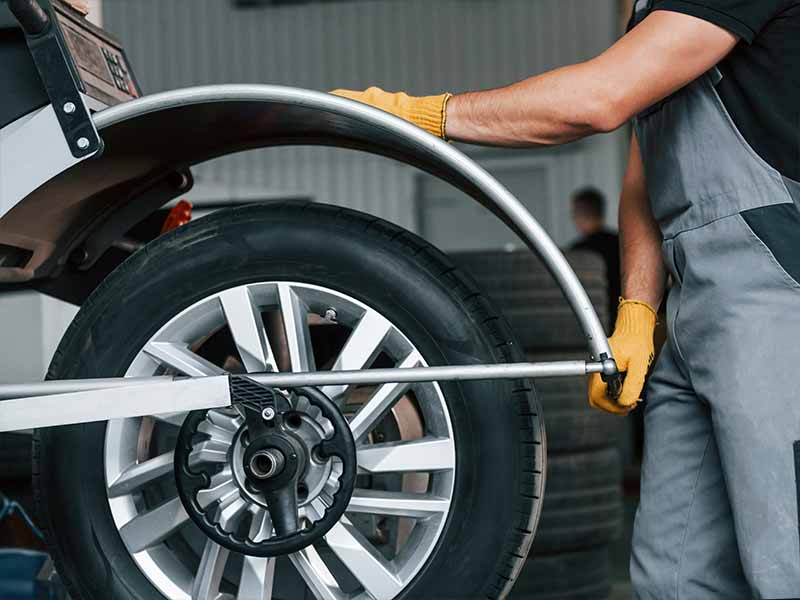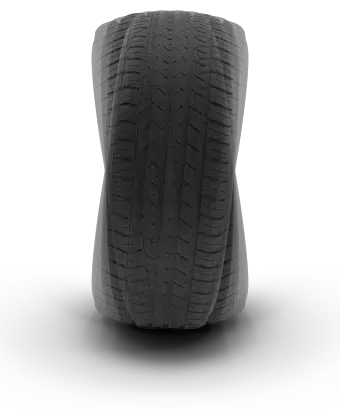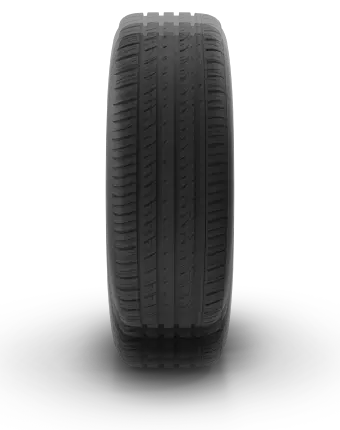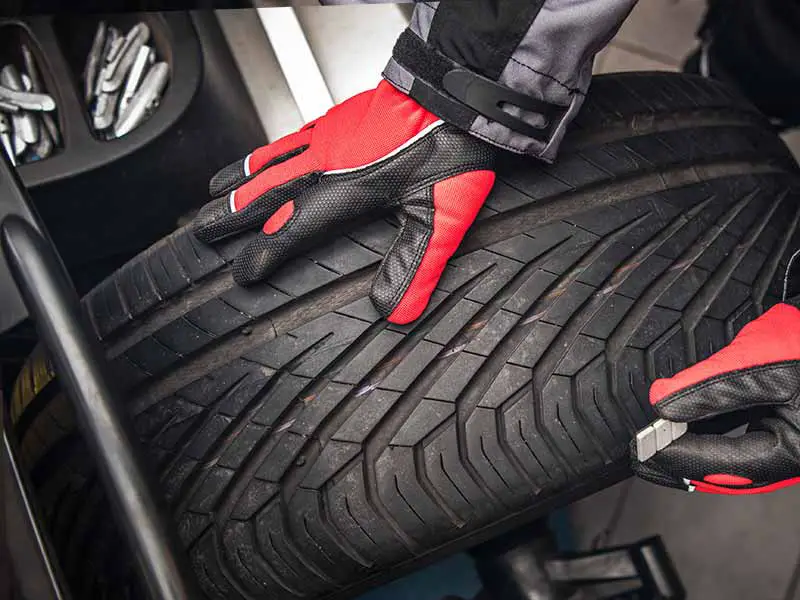Whether you’re a DIY car enthusiast or just looking to understand more about tire maintenance, choosing the best method of wheel balancing can make all the difference in the performance and longevity of your tires.
4 Types Of Wheel Balancing
- Static Balance
- Dynamic Balance
- Road Force Balance
- Balancing Beads
In this article, we’ll take a closer look at four popular methods of wheel balancing: static balancing, dynamic balancing, road force balancing, and balance beads.
We’ll explore the benefits and drawbacks of each method, as well as when it’s best to use each one.
Let’s take a closer look.

What Is Static Wheel Balancing?
Static wheel balancing is a popular method of tire balancing that has been used for decades. It’s a simple and effective way to make sure that your tires are evenly weighted and that there’s no heavy spot that could cause vibrations or uneven wear.
The process of static wheel balancing involves mounting your tire and wheel onto a balancer and then spinning it to see where it stops. The technician will then add weights to the rim until the tire is balanced and no longer wobbles.
This process ensures that your tire is evenly weighted around its circumference and that the heaviest part of the tire is aligned with the lightest part of the wheel.
One of the advantages of static balancing is that it’s a quick and affordable process that can be done at most tire shops. It’s a reliable method that can effectively balance most passenger car and light truck tires.
However, it’s important to note that static balancing does not account for any variations in the tire’s shape or sidewall stiffness, which could cause vibrations or other issues.
What Is Dynamic Wheel Balancing?
Dynamic wheel balancing is a more advanced method of tire balancing that takes into account not just the weight distribution of the tire and wheel but also the variations in the tire’s shape and stiffness. This is done by using a machine that spins the tire and measures its force variations as it rotates.
Based on this data, the machine will then recommend the placement and amount of weights needed to balance the tire. Unlike static balancing, dynamic balancing can help detect and correct any imbalances that are caused by variations in the tire’s construction or sidewall stiffness.
One of the benefits of dynamic wheel balancing is that it can result in a smoother and more stable ride than static balancing. It’s also a good option for drivers who have noticed persistent vibrations or other tire-related issues that haven’t been resolved with static balancing.
However, it’s important to note that dynamic balancing can be a more expensive and time-consuming process than static balancing. Not all tire shops offer dynamic balancing, so you may need to research to find a shop that can perform this service.
What Is Road Force Wheel Balancing?
Road force wheel balancing is an even more advanced method of tire balancing that takes into account not just the weight distribution of the tire and wheel but also the amount of force that the tire generates as it rolls down the road.
This is done by using a machine that applies a load to the tire while it’s spinning, simulating the weight of the vehicle on the tire. The machine then measures the tire’s road force and recommends the placement and amount of weights needed to balance the tire.
The goal of road force wheel balancing is to minimize the amount of vibration that is transferred from the tire to the vehicle while driving. This is important because even a small amount of vibration can cause discomfort for passengers and can also increase wear and tear on other parts of the vehicle.
Road force balancing is a more precise method of tire balancing than static or dynamic balancing. It can often help identify and correct issues that other methods may not be able to correct. However, it can also be a more time-consuming and expensive process and may not be necessary for all vehicles.
What Are Balancing Beads?
Balancing beads, also known as tire beads or dynamic balancing beads, are tiny beads made of glass or ceramic that are added to the inside of a tire to help balance it.
The beads work by distributing themselves evenly around the inside of the tire and then automatically adjusting their position as the tire rolls down the road. This allows them to counterbalance any weight imbalances in the tire, resulting in a smoother ride with less vibration.
One of the main benefits of balancing beads is that they don’t require any additional weights to be attached to the wheel or tire, which can be a more aesthetically pleasing option for some drivers. They also don’t need any special equipment or machines to install, making them a relatively easy and low-cost alternative.
It’s important to understand that balancing beads may not be suitable for all vehicles or tire types. They are generally recommended for larger tires or heavy-duty vehicles and may not be effective for smaller or lighter tires. Also, some tire manufacturers may not recommend using balancing beads with their tires.
No products found.Bucket Of Balancing Beads
Which Wheel Balancing Method Is Best?
Determining which wheel balancing method is best depends on the vehicle, tire type, and driving conditions.
Static wheel balancing is the most basic and commonly used method and is generally suitable for most passenger cars and light trucks. However, if you frequently drive at high speeds or on uneven road surfaces, dynamic wheel balancing may be a better option as it can better account for the weight shifts and tire deformations that can occur in these situations.
Road force wheel balancing is often recommended for high-performance vehicles or vehicles with low-profile tires, as it can more accurately measure and correct for any imperfections or inconsistencies in the tire’s shape or construction.
Balancing beads can be a good option for heavier vehicles or larger tires, as they can provide a more even and consistent balance without the need for additional weights.
What Is Wheel Runout?
Wheel runout is a term used to describe the amount of wobbling or vibration in a tire as it rotates.
There are two main types of wheel runout: lateral and radial. Lateral runout refers to the side-to-side deviation from a perfectly circular shape, while radial runout refers to the up-and-down deviation. Both types of runout can cause similar issues and can be caused by a variety of factors, including damage to the wheel, improper mounting, or manufacturing defects.


Another type of wheel runout is axial runout, which refers to the deviation from a perfect centerline rotation of the wheel. Axial runout is less common but can still cause vibration and uneven tire wear. It is often caused by a damaged or improperly installed wheel bearing or hub.
Resources
Below are some links you may find helpful when learning about tires
- Balancing your tires – Yokohama
- Why shouldn’t counteract balancing beads be used in automotive applications? – Vehicle Service Pros
Final Thoughts
- Static wheel balancing is the most basic method and works well for most passenger cars and light trucks.
- Dynamic wheel balancing provides more accurate balancing by taking into account the tire’s shape and the vehicle’s weight distribution.
- Road force wheel balancing is best for vehicles that experience high-speed vibrations or have tires with excessive runout.
- Balancing beads are an alternative method that can provide continuous balancing for the tire’s life.
Choosing the best method of wheel balancing ultimately depends on your vehicle type, driving habits, and personal preferences. Consulting with a professional tire technician can help you determine the best method for your specific needs.
Remember, maintaining proper wheel balance not only ensures a smoother ride but also prolongs the life of your tires and other vehicle components.
Good luck and happy motoring.






